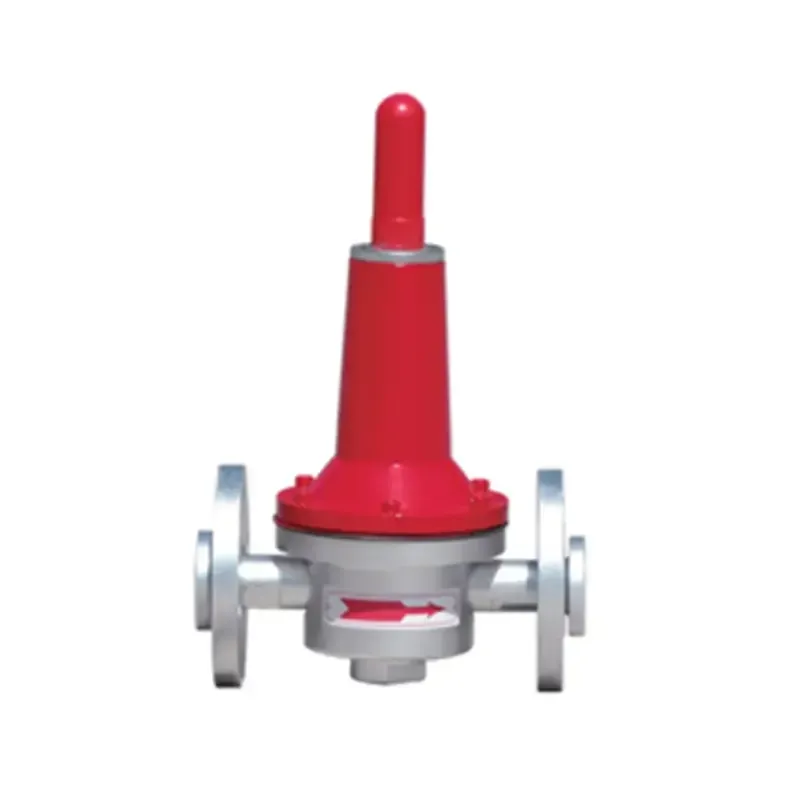
Dec . 24, 2024 01:30
Back to list
relief valves
Understanding Relief Valves Importance and Functionality
Relief valves are critical components in various industrial applications, playing a pivotal role in ensuring safety and efficiency within systems that operate under pressure. They serve as protective devices designed to prevent over-pressurization, which can lead to catastrophic failures, damage to equipment, or serious accidents. This article aims to delve into the function, types, and importance of relief valves in modern engineering.
What is a Relief Valve?
At its core, a relief valve is a safety device that automatically releases a substance (liquid or gas) from a boiler, pressure vessel, or piping system when the pressure exceeds a predetermined level. By allowing the excess pressure to escape, relief valves help maintain the integrity of the system and protect against potentially dangerous conditions.
How Relief Valves Work
Relief valves operate based on a straightforward principle they monitor the pressure within the system. Each valve is calibrated to open at a specific pressure threshold, allowing fluid to flow through the valve to relieve the pressure. Once the pressure has dropped to a safe level, the valve closes, preventing further discharge. This cycle ensures that the system remains within safe operating parameters without requiring manual intervention.
Types of Relief Valves
There are several types of relief valves, each designed for specific applications and conditions
1. Spring-Loaded Relief Valves The most common type, these valves use a spring mechanism to hold a disk against a seat. When the pressure exceeds the spring force, the disk lifts away, allowing the fluid to escape.
2. Pilot-Operated Relief Valves These valves utilize a smaller pilot valve that responds to pressure changes and controls the larger main valve. They are typically used in high-pressure systems and provide precise control over pressure relief.
3. Balanced Relief Valves Designed to minimize the effects of back pressure, balanced relief valves can maintain accuracy even when the outlet pressure fluctuates.
relief valves

Importance of Relief Valves
The significance of relief valves cannot be overstated. Here are a few key reasons why these devices are essential
1. Safety The foremost function of relief valves is to provide safety by preventing explosions and equipment failure. In industries such as oil and gas, chemical manufacturing, and power generation, the consequences of over-pressurization can be disastrous.
2. Equipment Protection Beyond personal safety, relief valves protect machinery and infrastructure from damage. Excessive pressure can lead to mechanical wear, leaks, and even total system failures, resulting in costly downtime and repairs.
3. Compliance with Regulations Many industries are subject to strict regulatory requirements regarding pressure equipment. Properly installed and maintained relief valves are often mandated by safety standards and regulations, ensuring compliance and reducing the risk of legal issues.
4. System Efficiency Relief valves contribute to the overall efficiency of a system. By maintaining optimal pressure, they enhance the performance and longevity of industrial processes.
Maintenance and Testing
Regular maintenance and testing of relief valves are crucial for ensuring their reliability and functionality. Over time, debris, corrosion, or wear can affect a valve's performance. Routine inspections, testing under controlled conditions, and periodic replacement of components can help maintain the operational integrity of these essential devices.
Conclusion
In summary, relief valves are indispensable in safeguarding industrial systems that operate under pressure. Their ability to automatically control excess pressure not only protects human life but also safeguards equipment and enhances operational efficiency. As industries continue to evolve, the design and technology surrounding relief valves will undoubtedly advance, but their fundamental role in maintaining safety and reliability will remain critical. Understanding and properly maintaining these devices is essential for anyone involved in system design, operation, or maintenance.
Latest news
-
Safety Valve Spring-Loaded Design Overpressure ProtectionNewsJul.25,2025
-
Precision Voltage Regulator AC5 Accuracy Grade PerformanceNewsJul.25,2025
-
Natural Gas Pressure Regulating Skid Industrial Pipeline ApplicationsNewsJul.25,2025
-
Natural Gas Filter Stainless Steel Mesh Element DesignNewsJul.25,2025
-
Gas Pressure Regulator Valve Direct-Acting Spring-Loaded DesignNewsJul.25,2025
-
Decompression Equipment Multi-Stage Heat Exchange System DesignNewsJul.25,2025

